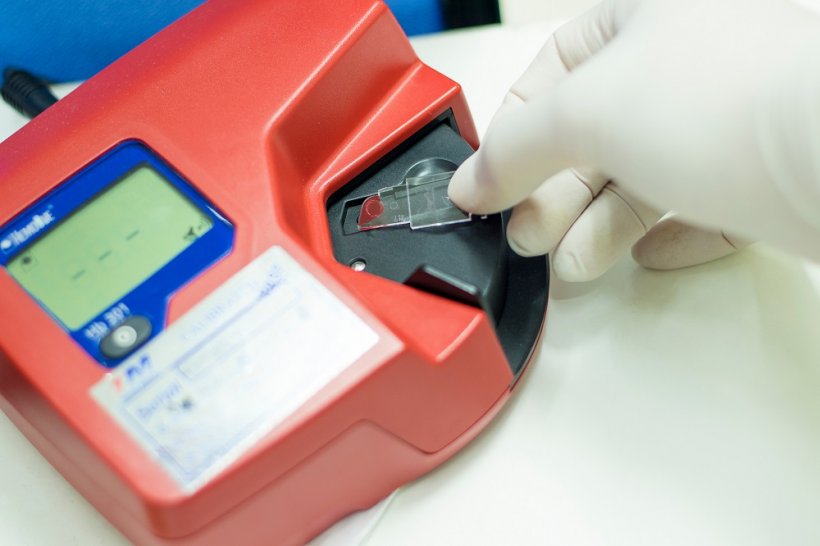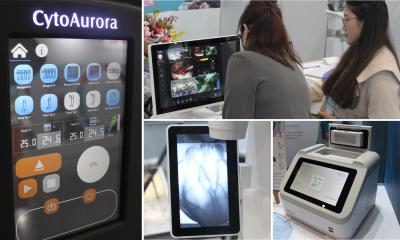
Image source: Shutterstock/Chakkaphan Kanta
Interview • Rapid diagnostics
The clinical potential of POCT
In 2019, the Central Laboratory of the Institute for Clinical Chemistry and Pathobiochemistry at the Klinikum rechts der Isar of the Technical University Munich, headed by Professor Peter B Luppa, organised the 4th of the internationally renowned Munich Point-of-Care Testing Symposiums. Dr Andreas Bietenbeck is senior physician at the Institute which for many years has been focusing on point-of-care diagnostics and initiated innovative research projects and developments. We asked him about the clinical potential of POCT.
Interview: Walter Depner
In recent years the capabilities of point-of-care testing have increased or improved considerably. Could progress be distinguished by three levels: clinical, technological and organisational – meaning integration into existing structures?

‘Indeed,’ agreed Andreas Bietenbeck, in response to the breakdown. ‘This is one way to describe developments, even if the different levels cannot always be clearly separated. On the clinical level I find continuous monitoring particularly interesting, especially continuous glucose monitoring. It allows a much more precise identification of the time windows when the patient shows critical blood glucose levels. With this information the physician can counteract more effectively. Moreover, continuous monitoring is much more pleasant for the patient.
‘Recently, I had the opportunity to test one of these continuous sensors. After a very short time I had simply forgotten that I’m carrying the patch with the sensor. With regard to infections, POCT offers a further huge benefit because it allows quick identification of pathogens, no matter where you are, even in developing countries. On the technological level we are seeing a continuous evolution of existing systems to make them ever more reliable. At the same time new types of POCT analyses are being developed, for example to detect circulating tumour DNA. On the organisational level hospitals have recognised that they need special structures to be able to properly manage POCT. Thus, many facilities have established a POCT committee with a POCT coordinator.’
While at Klinikum rechts der Isar sports medicine is not a focus, recently at a symposium on POCT in professional sports you talked about the possibilities new POCT offers in this particular field. Would you mind briefly summarising the ideas?
'Sports medicine uses the fact that with POCT the transport of samples becomes obsolete and the test results are available much faster. Thus, POCT facilitates adjusting and optimising training on the spot. I cannot assess the individual results as I am not an expert in sports medicine.'
If the user does not select properly, the results might show more healthy people than ill ones
Andreas Bietenbeck
These benefits are relevant not only in professional sports but in other areas as well. What trends are you observing?
‘Until recently, testing was limited to the clinical setting or particular applications such as professional sports, i.e. specialists. Today, monitoring is increasingly a part of everyday life. The new Apple Smartwatch, Apple Watch 6, is said to be able to measure heartbeat, ECG and blood oxygen. If these measurements are used for healthcare purposes, they have, for several reasons, to be treated with utmost caution. Firstly, we don’t know the quality of the measurements and we don’t know which malfunction might happen. Moreover, if the user does not select properly, the results might show more healthy people than ill ones. Operated by lay users even good quality testing equipment can show the monitored person as healthy, despite suspicious results.’
Integration into existing structures encompasses the human aspects, i.e. organisational or responsibility aspects, and technical aspect, such as integration into existing LIS or HIS. Have those issues been solved, or are they solvable. Is this an ongoing problem?
‘Today the known problems can be solved. There are many stable options for a hospital to integrate POCT equipment in their LIS or HIS. If some of the stakeholders don’t want such integration, problems arise – but they are non-technical. Today, however, we see new issues. Lab results, for example, are expected to be recorded – in addition to many other data – in the electronic patient file. Particularly with POCT it is difficult to record test results so that they can be interpreted correctly later on. For many tests, the POCT equipment shows considerable differences in quality. Moreover, the reliability of the tests depends to a large extent on who performs the test: the patient, healthcare staff or a lab staff.’
Success and failure are closely related to quality and thus responsibility. How, in your opinion, should these issues be settled?
‘In Germany we have a rather positive situation: we have guidelines for quality assurance of laboratory exams published by the national physicians’ association, the so-called Rili-BÄK. These guidelines define minimum quality standards for POCT. Within this framework the individual facilities can decide on the organisational structure that best suits their needs.
‘One of the key aspects of POCT is the fact that, for it to be successful, different departments such as the wards, the lab and IT have to cooperate. Thus, a platform should be stablished where these stakeholders can regularly exchange ideas and experiences. In the end, however, there is one person who needs to be responsible, and it makes a lot of sense for this person to be an expert in laboratory analytics.’
Profile:
Andreas Bietenbeck completed his studies in 2012 with a doctoral thesis – magna cum laude – on biochemical methods in the lab. He received inter alia the INSTAND research award for projects on quality assurance in laboratory medicine and the Ivar Trautscholt award for junior scientists for his contribution to improve medical lab quality control. At the Institute for Clinical Chemistry and Pathobiochemistry, at the Klinikum rechts der Isar of the Technical University Munich, he researches quality assurance, medical informatics and POCT, on which he has co-edited several seminal publications.
21.10.2020











